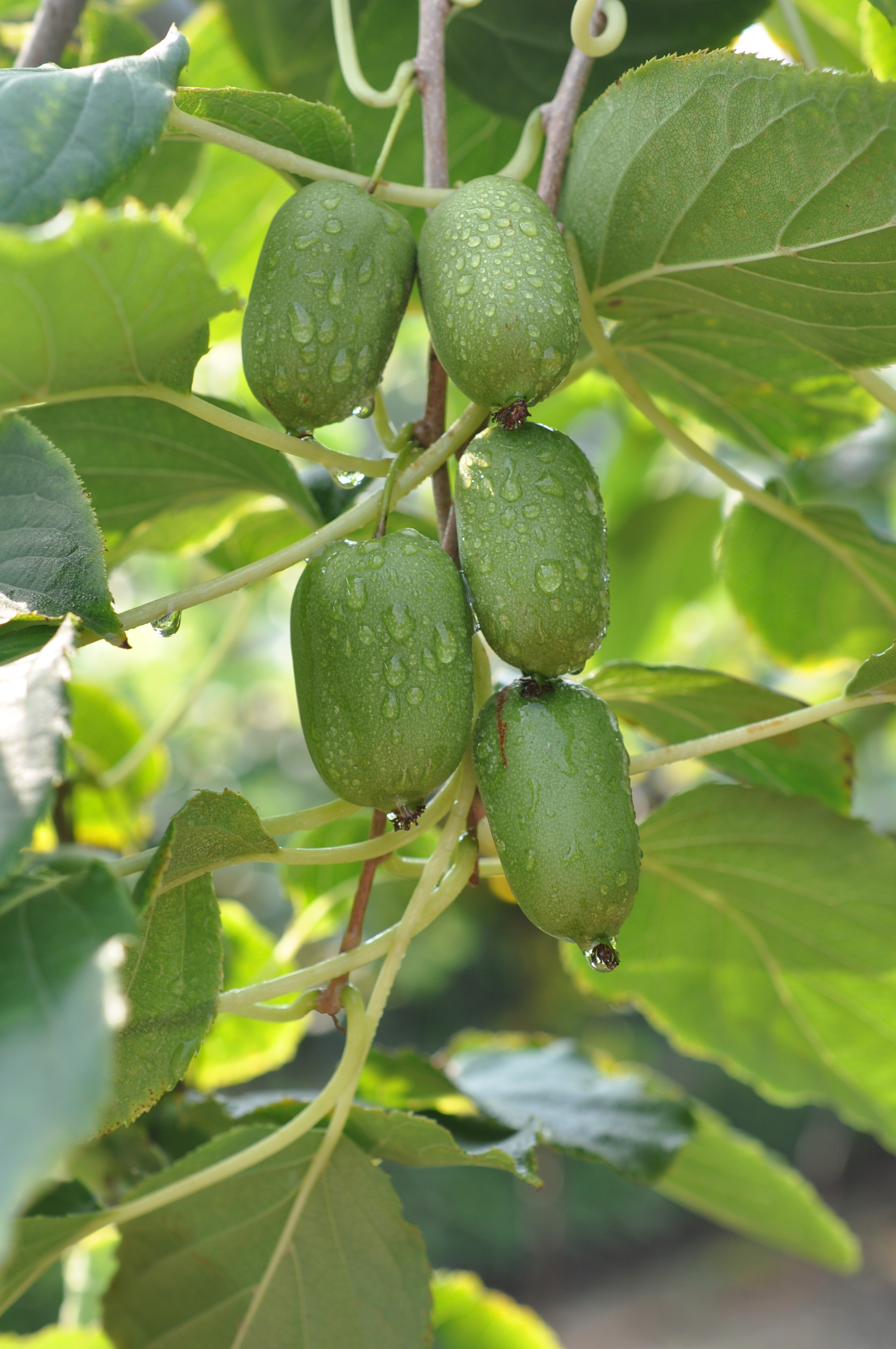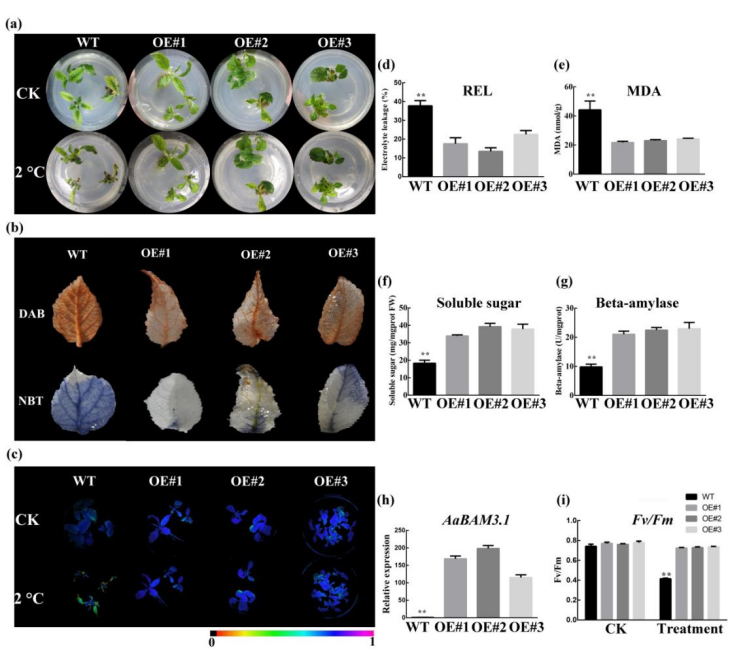Cold stress is a kind of abiotic stress that can considerably limit both plant growth and yield. For decades, frequent occurrence of extreme low temperature severely restricts development of kiwifruit industry. Recently, kiwifruit germplasm and breeding team of Zhengzhou Fruit Research Institute (Chinese Academy of Agricultural Sciences) has made new progress in mechanism of freezing tolerance on kiwifruit (Actinidia arguta ). These findings show that the AaCBF4-AaBAM3.1 module is involved in the transduction network related to the freezing tolerance of kiwifruit. The related research results were published in the journal of Horticulture Research.
This team previously identified β-amylase gene ( BAM ) that differentially expressed in kiwifruit with different freezing tolerance using BSR-Seq method, the function of BAM in freezing tolerance mechanism was investigated in this study. Beta-amylase (BAM) plays an important role in plant resistance to cold stress. A cold-responsive gene module was involved in the freezing tolerance of kiwifruit. In this module, the expression of AaBAM3.1, which encodes a functional protein, was induced by cold stress. AaBAM3.1-overexpressing kiwifruit lines showed increased freezing tolerance, and the heterologous overexpression of AaBAM3.1 in Arabidopsis thaliana resulted in a similar phenotype. The results of promoter GUS activity and cis-element analyses predicted AaCBF4 to be an upstream transcription factor that could regulate AaBAM3.1 expression. Further investigation of protein-DNA interactions by using yeast one-hybrid, GUS coexpression, and dual luciferase reporter assays confirmed that AaCBF4 directly regulated AaBAM3.1 expression. In addition, the expression of both AaBAM3.1 and AaCBF4 in kiwifruit responded positively to cold stress. Hence, AaCBF-AaBAM module is involved in the positive regulation of the freezing tolerance of kiwifruit.
The first author of the paper is Ph. D. student Sun Shihang from the Zhengzhou Fruit Research Institute, and the corresponding authors are Prof. Fang Jinbao from Zhengzhou Fruit Research Institute, CAAS and associate Prof. Lin Miaomiao from Zhengzhou Fruit Research Institute, CAAS. The research was supported by the National Science Foundation of China (Grant No. 31801820); the National Key Research and Development Project of China (Grant No. 2019YFD1000800); the Special Engineering Science and Technology Innovation, Chinese Academy of Agricultural Sciences (Grant No. CAAS-ASTIP-2015-ZFRI); and the Modern Agricultural Industrial Technology System of Henan Province (Grant No. S2014-11).
More details are available at the link below:
https://www.nature.com/articles/s41438-021-00530-1

Fig1 Freezing tolerant kiwifruit species ( Actinidia arguta )

Fig. 2 Cold tolerance characterization of A. chinensis harboring the 35 S::AaBAM3.1 construct. a Phenotypes of the overexpression lines (#1,#2, and #3) and WT plants under cold stress (2 °C for 2 h). b Diaminobenzidine (DAB) and nitro blue tetrazolium (NBT) staining of the overexpression lines (#1, #2, and #3) and WT plants under cold stress (2 °C for 2 h). c, i Fv/Fm of kiwifruit over the course of a 2 h low-temperature treatment. A colored barcode is shown below the images. d–g Relative electrolyte leakage (REL), malondialdehyde (MDA), soluble sugars (SS) and BAM activity levels were measured under cold stress. (h) Expression of AaBAM3 in kiwifruit under cold stress
By: Lin Miaomiao, linmiaomiao@caas.cn
Sun Shihang, 18838294775@163.com
